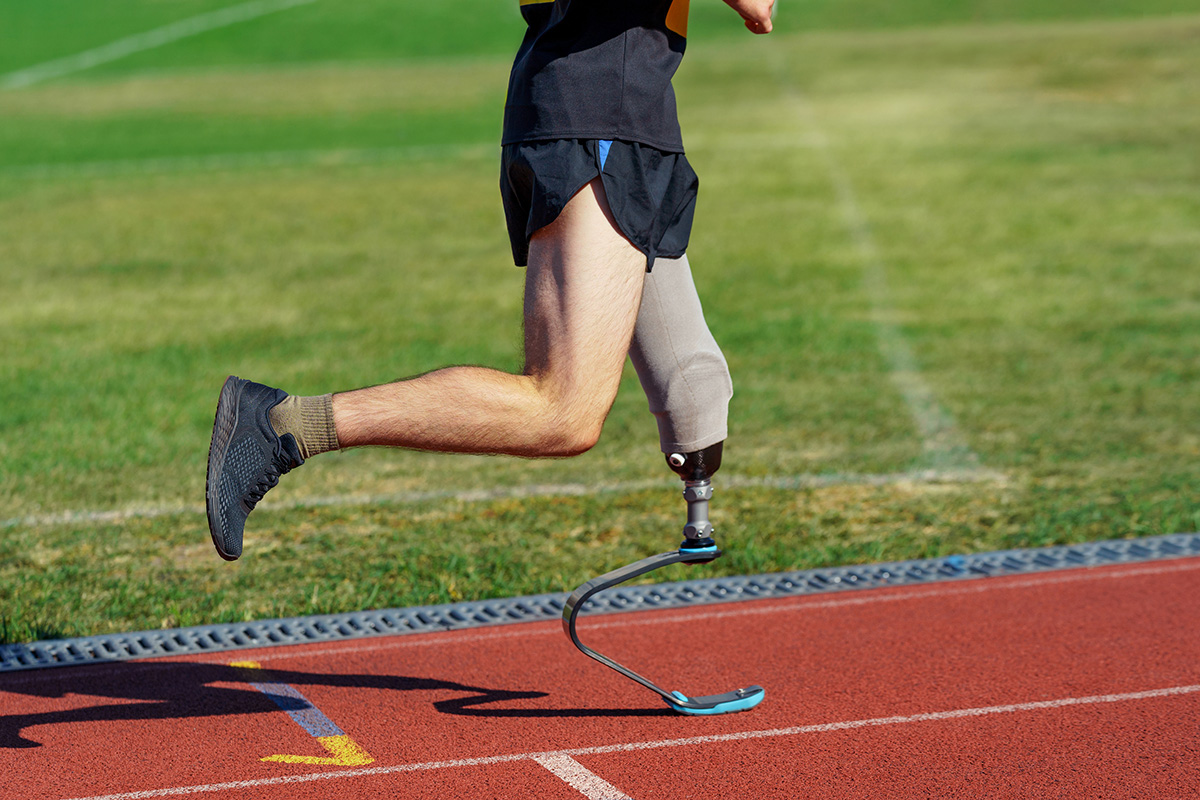Gait training is a type of physical therapy that can improve many people’s ability to stand and walk. Doctors will likely prescribe gait training to people suffering from an injury or illness that affects their ability to get around normally. Gait training is known to help strengthen muscle and joints, improve balance and posture, help develop muscle memory, build endurance, retrain legs for repetitive motion, and increase overall mobility.
Especially for those dealing with amputation of their lower limbs, it could also increase your risk of developing other illnesses like heart disease and osteoporosis. Whenever patients choose gait training over immobility, they are protecting and improving their health.
Physical therapists like those at Park Sports Physical Therapy work with lower limb amputees and believe that gait training plays a vital role in laying a solid foundation for the long-term success of their patients. Read on as we describe the positive impacts of gait training on people with amputation and what is involved in that training.
Here’s What You Need To Know About Gait Training For Amputees
Did you know that of the estimated 1.6 million people in the United States who suffer from limb loss, over 80% of those people have a lower-limb amputation? When these individuals fail to achieve prosthesis-assisted ambulation, or the ability to walk and move around on their own, they increase their risk for physical deterioration and several other health conditions. Without the help and guidance of a physical therapist, these amputees can develop characteristic gait asymmetries, including altered limb loading patterns, which can increase pain and metabolic costs. Over time, they’ll likely be prone to reduce their energy consumption, leading to health risks and immobility in general.
Let’s discuss why gait training is necessary and what can be expected with that type of training.
Why Is Gait Training Important?
Almost every lower-limb amputee is simply looking to walk “normally” again with their prosthesis. Though “normal” has several definitions, physical therapists define it as a symmetrical gait pattern that falls within the average range in terms of rate of speed, posture, limb positioning, step length, and more.
Generally, the higher the amputation level, the more gait deviations (also called limps) show up. Limps arise because with amputation, muscle, sensory receptors, and leverage are lost. Therefore, a person with a higher amputation level typically has a less stable and less energy-efficient gait pattern than others with a lower amputation level. Physical therapists across the world will agree that recent amputees will have the most to gain with gait training because using a prosthesis is a new challenge, and it’s important to establish healthy habits early on.
The best gait training programs will include aligning the prosthesis to ensure that all components of the equipment are positioned property to optimize the gait pattern. In addition, the prosthetist provides initial gait instructions to ensure that the person using it can stand and walk with stability and decrease the risk of falling.
Especially at these early stages, it is best to enlist the help of a physical therapist for regular gait training sessions. When consistent stability is established, other exercises can be taught to help encourage walking without support. Most physical therapists will agree that even amputees who have used a prosthesis for years can benefit from gait training. Whether patients are looking for a tune-up or learning a new skill, it’s important that amputees establish close communication with their physical therapists. This is especially critical considering how sophisticated today’s prosthetic components are, including their need for careful adjustments.
What Is Involved With Gait Training With People With Amputation?
Here are some of the things an amputee can expect when starting a gait training program:
Typically, it starts with pre-gait activities that are meant to help establish prerequisite skills that ultimately help prosthetic ambulation (the ability to walk without physical assistance). These include donning and removing the prosthesis, setting static standing balance, sit-to-stand transfers, and dynamic weight shifting.
Patients can also expect part-to-whole gait training, which consists of practicing the individual components and building up to the complete tasks. This practice allows physical therapists to identify deficiencies so that they can prioritize training and improvement in those areas.
Treadmill training is a very popular means to help new prosthesis users increase their stamina in a safe and controlled environment. Treadmills provide a consistent and level walking surface that is free from environmental obstacles. Additionally, it allows the therapist to focus on gait mechanics and provide live feedback.
A physical therapist who focuses on gait training with people with amputation might also use bodyweight-supported training as a variant of treadmill training. Typically, it involves using an overhead harness so that patients can practice walking using only a small percentage of their body weight. This allows individuals to learn and practice proper gait mechanics using less weight that can progressively increase as they develop strength and confidence.
Gait training might also employ psychological awareness training which encourages the patient to be mindful of certain gait variables. This could include step and stride lengths, side-to-side movement symmetry, pelvic rotation, and more. Again, the purpose is to help patients consciously monitor their performance with respect to their goals.
Let Park Sports PT Help You Today
At Park Sports Physical Therapy, we are introducing gait training programs for people with lower-limb amputation and including Prosthetists in our team at the Clinton Hill Clinic. The key to a successful prosthetic training program is to instill good habits early on and focus on quality movements that our patients can practice on their own. This includes ensuring each of our patients:
- Can correctly put on and remove their prosthesis,
- Establishes a proper center of balance and posture (which minimizes compensations)
- Shows prosthetic stance control with single-leg activities
- Has undergone thorough pre-gait training to help break down improper gait training and improve motor control
- Can handle functional training
- And more!
Our goal is to help our patients understand the fundamentals and establish meaningful goals so that we can work together to create a more normalized gait pattern. We’ll help minimize gait deviations and focus on one thing at a time so that our patients can master higher-level activities over time. Our mission is to help you get comfortable in your own environment and get back to doing the things you love.
Get in touch with our experts today, and let’s discuss your goals.
.png?auto=format&auto=compress&h=150)
